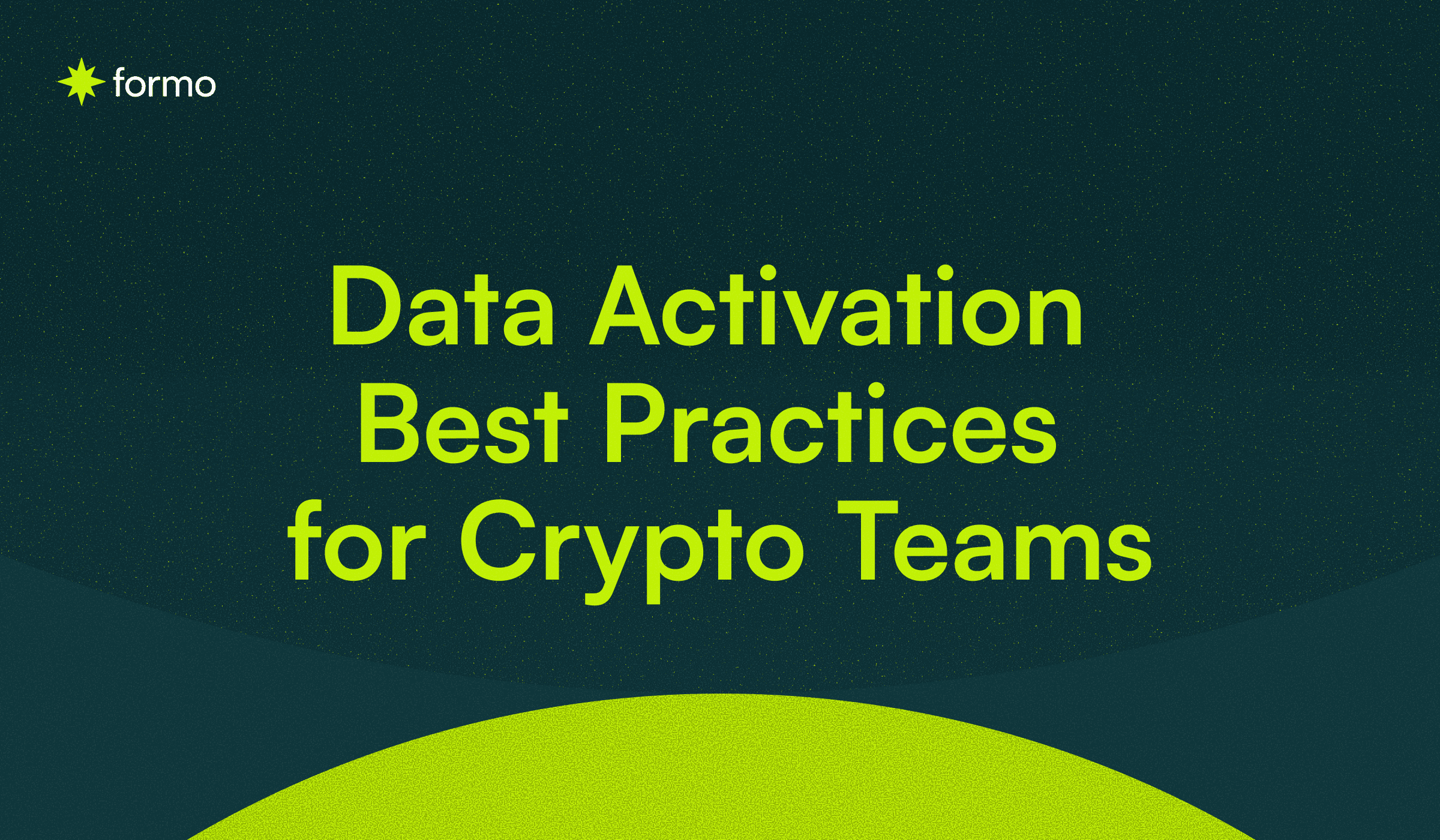A Wallet Score is a dynamic, data-driven reputation score derived from a wallet’s onchain activity, wallet labels, attestations, and proof-of-personhood. Wallet Scoring helps you filter for signal from noise in your onchain audience — enabling you to detect Sybils, identify top contributors, and target growth efforts with precision.
Key Takeaways
A Wallet Score is a composite reputation score (0–100) based on your users' onchain activity, wallet labels, attestations, and proof-of-personhood.
Wallet Scoring helps Web3 projects detect Sybil attackers, identify loyal contributors, and optimize incentive programs.
A Wallet Score replaces vanity metrics such as wallet and transaction counts with quality-based scoring.
Wallet Scoring enables precise user segmentation, governance protection, and targeted growth campaigns.
Web3 audience insights is a must-have tool for turning data into impact onchain.

Wallet Scoring reveals your most valuable users by analyzing their onchain behavior and engagement patterns.
What is Wallet Score?
A Wallet Score is a numerical reputation score (typically from 0 to 100) that measures how engaged and valuable a blockchain wallet is based on its onchain activity, behavioral patterns, and verified credentials. You can think of it as a credit score for Web3 users — but instead of predicting whether someone will repay a loan, it predicts whether a wallet is likely to contribute meaningful, long-term value to a Web3 project, DAO, or community. Instead of guessing who your best users are, a Wallet Score makes it measurable.

Why Traditional Web3 Metrics Fail
For years, Web3 teams have tracked success using familiar metrics like:
Wallet Count → How many wallets have interacted with your dApp.
Transaction Volume → The total number of transactions processed on your protocol.
TVL (Total Value Locked) → The total assets staked or deposited in your ecosystem.
While these numbers offer a high-level snapshot, they fail to answer the most important question: “Are these wallets truly valuable contributors — or just noise?”
The Core Flaws
1. Unlimited Wallets Per User
In Web3, one person can easily create dozens or even hundreds of wallets. This inflates “user” counts and makes it impossible to tell how many real individuals you’re serving.
2. Short-Term Extraction Behaviors
Many participants interact with a protocol only long enough to extract value — such as farming airdrops or rewards — before leaving. This can make your numbers look good temporarily, but it doesn’t reflect sustainable growth.
3. No Measure of Quality
Raw activity metrics can’t tell the difference between a spammy airdrop farmer and a dedicated community member who actively contributes to your ecosystem.
Core Inputs for Wallet Score
Formo’s Wallet Score system combines behavioral, financial, and identity signals to assess the true value and credibility of any wallet. This goes far beyond simple activity counts to reveal who your most valuable users are.
1. Onchain Activity
A wallet’s transaction history is the most direct reflection of its onchain life.
We analyze:
Cross-chain participation → Which blockchains the wallet is active on (e.g., Ethereum, Polygon, Arbitrum). Multi-chain users often have broader experience and higher engagement potential.
Transaction types → Swaps, staking, liquidity provision, lending, governance votes — each action reflects a different level of sophistication and commitment.
NFT activity → Minting, holding, and transferring NFTs can signal cultural involvement, investment behavior, or speculative intent.
Consistency over time → Regular, long-term participation is a strong signal of loyalty; short, intense bursts may indicate opportunistic farming.
Understanding transaction behavior helps you segment users by engagement style, not just by volume.

2. Wallet Labels
Formo uses onchain patterns to assign meaningful classifications to wallets automatically:
Whale → Holds large token balances or high-value NFTs, often influencing liquidity and market sentiment.
OG → Early adopter of key protocols, often signaling deep ecosystem knowledge and long-term commitment.
Active Trader → Frequent DEX/CEX activity, often responsive to market events and token launches.
Airdrop Farmer → Opportunistic participation in reward campaigns; valuable for volume but less so for retention.
Labels instantly turn raw addresses into actionable audience segments for targeting, rewards, or community building.

3. Attestations
Attestations add a trust layer by linking wallets to provable credentials:
ENS domains → Branding and identity signals, often used by serious participants.
Gitcoin Passport stamps → Proof of identity, contributions, or specific skills.
POAP badges → Immutable record of event attendance and participation.
DAO contribution attestations → Onchain recognition of governance votes, proposals, or project work.
Attestations help distinguish trusted, credible contributors from anonymous or low-effort participants.
4. Proof-of-Personhood
One person can own hundreds of wallets, but proof-of-personhood helps ensure you’re looking at unique human participants:
Worldcoin → Biometric iris verification.
BrightID → Social graph–based human verification.
HumanityDAO → Decentralized proof-of-humanity credential.
Reduces Sybil attacks, cleans up inflated user counts, and ensures incentives go to real people, not bot farms.
The Formo Multi-Dimensional Score Framework
Most projects stop at counting transactions or token holdings.
Formo takes it further by evaluating users across 5 dimensions:
Dimension | Why It Matters | Example Metrics |
User Activity | Measures ongoing engagement | Active days, tx frequency, protocol diversity |
Developer Behavior | Identifies builders | Smart contracts deployed, GitHub-linked wallets |
Financial Metrics | Captures economic weight | Token holdings, staking deposits, liquidity provision |
Adoption | Shows cross-ecosystem involvement | Number of protocols, chains used |
Community Strength | Reflects social capital | ENS name, Lens handle, DAO memberships |
How Wallet Score Is Calculated
While Formo’s exact algorithm is proprietary, the scoring framework follows a transparent 4-step process designed to capture true wallet value.
1. Data Collection
We aggregate and enrich wallet data from multiple sources:
Cross-chain transactions → Ethereum, Polygon, Base, Arbitrum, and more.
Token & NFT holdings → Asset value, diversity, and stability over time.
Wallet labels & attestations → Behavioral classifications and verifiable identity signals.
2. Signal Weighting
Not all activity is equal. Formo’s scoring engine:
Prioritizes meaningful engagement → Diverse, sustained activity such as staking, governance participation, and trading.
Downranks low-effort behaviors → Short-term, spammy actions like mass airdrop claims without follow-up activity.
3. Score Generation
We apply Bayesian statistical modeling to evaluate the likelihood of a wallet being a valuable, sustained contributor.
Results are normalized to a 0–100 scale for easy interpretation.
Higher scores indicate higher potential for retention, influence, and value creation in your ecosystem.
4. Dynamic Updates
Wallet scores refresh daily to capture new transactions, shifts in holdings, and changes in engagement patterns. This ensures your audience insights always reflect the most up-to-date wallet behavior.
Why Wallet Score Is a Growth Game-Changer
In Web3, growth is easy to fake — and expensive to maintain. Without a wallet score, projects often fall victim to wasted incentives, governance manipulation, and misleading analytics.
The Problem Without Wallet Score
Wasted Incentives → Rewarding Sybil attackers and short-term opportunists instead of loyal contributors.
Governance Manipulation → DAO votes swayed by fake accounts holding multiple wallets.
Skewed Analytics → Decision-making distorted by inflated vanity metrics.
The Solution With Wallet Score
Wallet score flips the script, enabling you to filter noise, focus on value, and grow with precision:
Identify & Retain Power Users → Know exactly who your most valuable contributors are.
Spot Sybil Patterns Early → Detect multi-wallet abuse before it drains resources.
Target Campaigns for Maximum ROI → Invest incentives where they will have the biggest impact.
High-ROI Use Cases
1. Sybil Attack Prevention
Filter out low-score wallets before:
Airdrops
Token sales
Reward distributions
2. Community Segmentation
High Score → Invited to governance, VIP events, and early product access.
Mid Score → Target with education & onboarding campaigns.
Low Score → Monitor and engage selectively.
3. Targeted Growth Campaigns
Reward your top scorers with:
Exclusive NFT drops
VIP Discord access
IRL event invitations
4. Governance Security
Weight DAO votes by wallet score to reduce Sybil influence and protect decision-making integrity.
Example: NFT Marketplace Loyalty Campaign
An NFT marketplace launches a loyalty program:
Score ≥ 80 → VIP Discord + exclusive NFT drop.
Score 50–79 → Standard rewards package.
Score < 50 → No rewards, flagged for review.
Results:
30% fewer rewards wasted on inactive wallets.
2× higher engagement rate among top scorers.
Stronger trust in the fairness of distribution.
Implementing Wallet Score with Formo
Connect Your Dataset → Formo ingests your cross-chain user data.
Automatic Scoring → Proprietary model calculates wallet scores daily.
Set Rules → Define thresholds, e.g., only reward scores ≥ 70.
Segment & Act → Run targeted campaigns, secure governance, block Sybils.
In a pseudonymous Web3 world, Wallet Score is your reputation compass.
Wallet Score turns fragmented blockchain activity into one reliable metric for:
Segmenting users
Preventing abuse
Growing sustainably
With Formo, wallet score is automated, scalable, and deeply integrated into your growth stack — so you can focus on building, while we ensure your ecosystem grows with quality and trust.
Read more:
Follow Formo on LinkedIn and Twitter, and join our community to learn how you can turbocharge growth onchain!
FAQs
1. What is a Wallet Score?
A Wallet Score is a numerical reputation metric (0–100) that evaluates the trustworthiness, engagement, and long-term value of a blockchain wallet. It is calculated by analyzing onchain activity, behavioral patterns, verified attestations, and proof-of-personhood. Wallet Scores help Web3 projects distinguish genuine users from low-value or fraudulent wallets.
2. Why is Wallet Score better than traditional Web3 metrics?
Traditional metrics like wallet count, transaction volume, or TVL can be misleading:
One user can control hundreds of wallets, inflating user counts.
Many wallets only interact with protocols temporarily (e.g., reward farming).
Raw activity numbers can’t separate spam wallets from genuine contributors.
Wallet Score addresses these issues by measuring quality engagement, ranking users based on their actual value to your ecosystem, and enabling smarter growth strategies.
3. How does Wallet Score prevent Sybil attacks?
Sybil attacks involve creating multiple wallets to exploit airdrops, governance, or incentive programs. Wallet Score identifies suspicious patterns, such as:
Identical behaviors across multiple wallets
Low-quality, one-off transactions
Wallets with low scores can be filtered out before distributing rewards, approving governance votes, or granting access to exclusive features.
4. How can Wallet Scoring improve growth campaigns?
Wallet Scoring allows precise user segmentation for targeted engagement:
High Score: VIP governance access, early product releases, exclusive NFT drops
Mid Score: Onboarding campaigns, educational content, community engagement
Low Score: Limited rewards, monitored activity before deeper involvement
This ensures marketing and incentive budgets are spent on high-value users who are most likely to contribute long-term.
5. Are Wallet Scores only for large Web3 projects?
No. Wallet Scores benefit projects of all sizes:
Small projects: Identify and reward early loyalists.
Mid-sized projects: Run targeted campaigns and prevent Sybil exploitation.
Large ecosystems: Secure governance, protect incentives, and segment communities at scale.
Platforms like Formo automate Wallet Scores and update them daily, making them effective for both startups and established protocols.
6. What data points contribute to a Wallet Score?
Wallet Scores typically analyze:
Onchain transaction history (frequency, diversity, and volume)
Behavioral patterns (repeated interactions, timing, and network activity)
Verified attestations (proof-of-personhood, KYC-lite, or social proofs)
Token holdings and participation in governance or staking programs
These factors combine to create a holistic view of wallet quality and engagement.
7. Can Wallet Scores be used for DeFi and NFT projects?
Yes. Wallet Scores are applicable across DeFi protocols, NFT platforms, and DAOs. They help identify high-value liquidity providers, active stakers, engaged NFT collectors, and loyal community members while mitigating spam and fraud.
8. How frequently should Wallet Scores be updated?
Wallet Scores should be updated daily or in real-time to reflect the latest user behavior. Regular updates ensure campaigns, airdrops, and governance decisions rely on current and accurate wallet quality assessments.
9. How do Wallet Scores support governance decisions?
In DAOs or decentralized governance systems, Wallet Scores help:
Weight votes by wallet quality or engagement
Prevent Sybil attacks from compromising decisions
Encourage participation from genuine, high-value community members
By integrating Wallet Scores into governance, projects can maintain fair and secure decision-making.





